
Kissing Cousins?
June 2, 2014
Story #1
My old Ford Mustang convertible needed a paint job several years ago so I took it to the local body shop in upstate New York where I live. Once all the details had been discussed with the shop owner (let’s call him Norm), I remembered something that had always bothered me. The first of three decorative chrome strips along each side of the car didn’t line up with the other two. When I pointed this out to Norm and asked that the errant strips be aligned more pleasingly, he took out his Ford manual and showed me that they were placed exactly according to specifications. “I’m sorry,” Norm said, shaking his head. “But I’d rather not do it. You’ve got a nice car here, Mr. Steinhardt, and if I move those strips, the Mustang will no longer be in its original condition. You wouldn’t want that, now, would you?”
Story #2
My parents lived in the same house for almost forty years. Mom and Dad took reasonable care of the place. They had the roof fixed if it leaked, called the plumber if the toilet backed up, and checked for termites regularly. What they didn’t do was renovate, expand, or change anything—something others might have reasonably considered for a house built in the 1920s. I guess my parents thought there was nothing wrong with their sweet little three-bedroom home just as it was. When Mom, then a widow, finally decided to sell the house, the eventual buyer paid slightly more than the house’s market value. The reason, the real estate agent said, was that the house had been kept in its original condition.
Story #3
I attended a performance of Bach’s Fifth Brandenburg Concerto. The concert was billed as “historically informed and played on period instruments.” “Period instruments” in this case meant a wooden recorder rather than a metal flute, harpsichord instead of piano, and string instruments with lower bridges, shorter necks, gut strings, and Baroque-style bows. The performers used vibrato sparingly and played with a lighter, more transparent sound. This “historically informed” performance was intended in essence to turn the clock back more than two hundred and fifty years in order to recreate how music of Bach’s time would have sounded—in other words, to present the Brandenburg Concerto in its original condition.
Is my imagination getting the better of me or has no other age besides ours placed so much importance on preserving things in their prized original condition? Just picture a caveman rejecting a stick tied to a rock with animal skin (the early hammer?) because his rock would no longer be in its original condition. Or let’s imagine Wolfgang Amadeus Mozart bringing his horse-drawn carriage into an eighteenth-century Norm’s place to have an added writing desk installed for his composing. “I’m sorry,” Norm says, shaking his head. “But I’d rather not do it. You’ve got a nice carriage here, Mr. Mozart, and if I add the desk, your carriage will no longer be in its original condition. You wouldn’t want that, now, would you?”
Since time began, the freshness of the new if not the usefulness of the improved has usually banished the old. One civilization quite literally built on top of another, often sweeping the last one unceremoniously aside, all of them only to be uncovered millennia later by present-day archeologists eager to determine their—here we go again—original condition.
Norm and the real estate agent maintained that both my car, and Mom and Dad’s house were worth more to customers in their original condition. I believe them. There is something seductive about attempting to recapture a singular moment in time in which culture, style, and technology come together as never before or after. Tooling around in my “original condition” Mustang, it becomes a time machine that draws me back to 1973, the year the car was built. My hair is ridiculously long again, perhaps I’m wearing bell-bottom jeans, and I can almost hear the Beatles singing “Hey Jude” as the wind blows past my ears. Similarly, our old “original condition” house easily recalls my parents’ depression-era stories and their early memories of iceboxes, washboards, Al Jolson’s crooning, and the radio voices of such comedians as Eddy Cantor, Fred Allen, and Jack Benny.
Ah, those were the days.
Even assuming for the moment that musicians in the historically informed Brandenburg performance I listened to had gotten it right, that they had perfectly captured Bach’s original spirit, there was no such “ah, those were the days” moment for me. How could there be? I wasn’t alive then.
The fact that none of us has ever heard a Baroque era performance has not interfered with a mass movement that is underway. Music departments devoted to the study of “historical” performance practice have sprung up everywhere and professional Baroque ensembles enthusiastically travel the world. It must be a challenge for musicians involved in this pursuit to lead us from here to there, from the present to that particular past. I can read what Leopold Mozart, Francesco Geminiani, and other eighteenth-century figures wrote about style, ornamentation, and vibrato, but words at best describe music poorly. I can also learn basic facts about Bach: He played the violin expertly as well as the organ and keyboard, he lost both his parents before the age of ten and his first wife, Maria Barbara, after thirteen years of marriage, he buried twelve of his twenty children, he was jailed temporarily because of an employment dispute, and he lived to the then ripe old age of sixty-five—but none of these facts help me to understand how Bach or his contemporaries played music.
As a fan of things set in their very own time and place, I have no problem with the historically informed movement. Let musicians try as best they can to recreate the three-hundred-year-old world we can only know second-hand. What mystifies me is how little interest we seem to have in performance practice of the nearer past we know all too well.
Those two pasts were forever cleft in two in 1877 when Thomas Alva Edison invented a rotating cylinder covered in tinfoil that could record and replay sound. He spoke the words “Mary had a little lamb…” into this “talking machine” he called a phonograph and was able to replay the words clearly. Initially, Edison thought of selling his invention as a dictation machine, but Julius H. Block, a music-loving businessman, had other ideas. Block obtained a phonograph from Edison and brought it to Russia where he often did business. There he recorded some of the country’s most prominent musicians on hundreds of wax cylinders. In an 1890 hold-your-breath moment, Block captured the composer Peter Ilyich Tchaikovsky and the pianist Anton Rubinstein in conversation. Tchaikovsky is heard complimenting Edison on his invention and Rubinstein adds, “What a wonderful thing.” Yet Rubinstein, balanced on that dizzying cusp between B.R. (before recordings) and A.R. (after recordings), chose not to play for the “talking machine” and we are robbed of ever knowing what one of the greatest virtuoso pianists of the nineteenth century sounded like.
Because of Edison’s invention and the improvements that followed, there are innumerable recorded performances available to us today from the 1880s on—not really so very long ago.- that nearer past. As a violinist myself, I can listen to the German violinist Joseph Joachim (1831–1907) performing the Adagio movement from J. S. Bach’s solo violin Sonata in G Minor and Brahms’s Hungarian Dance #1 made for the Gramophone and Typewriter Ltd. Company in 1903. I can hear the Spanish violin virtuoso Pablo Sarasate playing his very own composition, Zigeunerweisen, in 1904. I can hear Arnold Rosé (1863–1946), the concertmaster of the Vienna Philharmonic for fifty years, playing the first movement of J. S. Bach’s solo Sonata in G minor and Beethoven’s Romance in F major in 1909. I can listen to a variety of repertoire that the Belgian violinist Eugene Ysaÿe (1858–1931) recorded in New York City’s Woolworth Building between 1912 and 1914. I can thrill to innumerable recordings of the Viennese Fritz Kreisler (1875–1962) and the Russian Jascha Heifetz (1901–1987).
These great violinists had their own individual and highly personal style of playing but were also clearly creatures of time and place. You can hear it in their sound, their vibrato, their phrasing, and their sense of rubato. Do we contemporary violinists admire their playing? Greatly. When fiddlers get together, our conversation is filled with talk about violinists of the past: Did you hear Joseph Szigeti’s Prokofiev Concerto #1? Sheer poetry. Yehudi Menuhin’s Elgar Concerto? So touching. Mischa Elman’s Meditation from Massenet’s Thaïs? What a sound. Bronislav Huberman’s Brahms Concerto? Memorable. You know, Brahms loved the way he played it. But would we want to sound like any of them? I don’t think so. We have our own musical personalities and besides, like it or not, we’re also creatures of our own time and place.
But the question stubbornly remains: Why are we so drawn to the pursuit of authentic “historical” performance? I suspect that our era and that of the Baroque are secret kissing cousins with certain musical patterns, gestures, and boundaries in common that we not only love but also feel comfortable with. The word “Baroque” apparently comes down to us from the Portuguese “barroco,” meaning a pearl of irregular or bulbous shape. The music of that “irregular” era, first deplored in some quarters as strange, bizarre, even grotesque, had at its core states of mind and feeling: joy, sorrow, fear, anger, and so on. Bizarre possibly, but then accepted, and by today’s standards, still enormously affecting yet safely set in a style centuries past That crisp, clean, often vibratoless, emotional but not too emotional sound often produced by a Baroque ensemble sometimes seems almost electronic and very contemporary to me. Could it be that the connection we feel gives us the luxury of indulging in all our personal ideas of historical authenticity without ever having to answer to anyone who actually lived and performed then?
What if Edison had invented the phonograph in 1700 rather than 1877? And what if Julius Bloch had been able to record Bach’s band of musicians plying their trade at the time? Who wouldn’t be curious to hear what they sounded like in their “original condition”? But would we ourselves want to perform in that style after our ears have been subjected lifelong to modern-day performances not only of Bach, but also of Mozart, Beethoven, Schubert, Brahms, Bartók, Debussy, Stravinsky, Gershwin, John Cage, Steve Reich, Duke Ellington, and Thelonious Monk?
I’m not so sure.

Me and my “original condition” Mustang. photo credit: Dorothea von Haeften
Subscribe
Sign up to receive new stories straight to your inbox!








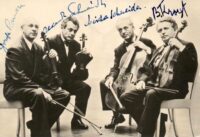
























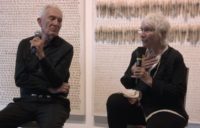


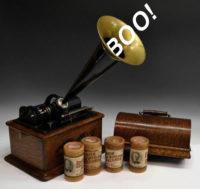
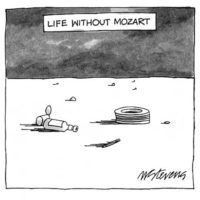















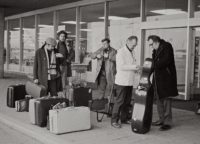



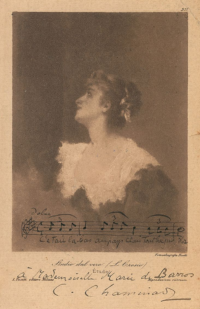




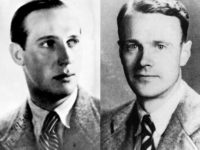


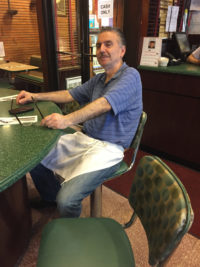



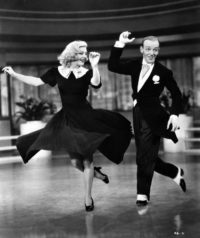







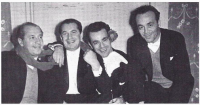
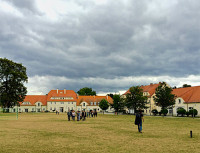
























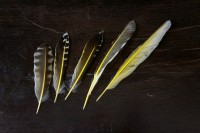

























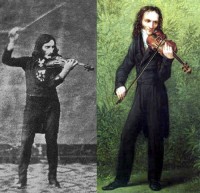



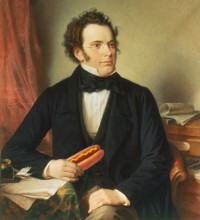

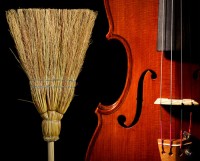





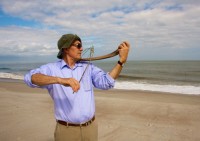























Comments
Dear Mr. Steinhardt,
A fascinating essay on a topic I’ve often thought about. The artifacts of the past have a special charm and value if kept in the original condition. But music is not an artifact; it is a dynamic process that is recreated anew with every performance, as the written notes blend with the skill and resources of the interpreter and with the preferences of listeners in the era when it is performed. It is no dishonor to Bach or the instruments of his era if one believes (as I do) that among the finest performances of the Brandenburgs is that of Wendy Carlos.
On another topic, I was recently horrified to discover that Wikipedia’s entry for the Guarneri Quartet contained little beyond the names of the players and a list of recordings. I have undertaken to improve that situation, and I hope the result is worthy of the ensemble I have loved since I heard some of its very first concerts in Binghamton in 1964.
Best regards.
You did it again. What a thoughtful piece! As you mentioned those legendary names I remember discussions about some of them in my house, since my parents and my sister heard many of them and I even heard Heifetz live myself. Love you Sonya
Wow! As I struggle with vibrato as a new adult violin student I feel I have been set free! Vibrato, ha, I am a barroque violinist just claiming my personal style! Your stories are always so insightful and well timed. Thank you for your words. Take care, Kathleen
Very interesting. The issue of historically informed performance is complicated. People say we should hear the music the way the composers would have, hence the desire for instruments and style in agreement with what was done when the pieces were written. But what could be played back then was, perhaps, not what the composers heard in their mind’s ear when they composed. There is plenty of reason to believe that Beethoven would have rejoiced to have a modern Steinway grand, for example. And perhaps Bach would also have enjoyed the dynamic control of a piano. Modern performance practices might not sound the way musicians did in the Baroque or Classical era but we can get insights from modern performance that we wouldn’t have from Baroque performance. The Music is actually something abstract. Bach’s great Ciaccona is not the sound of a violin. I have heard Bach performed on a large variety of instruments: violin (Baroque and Modern), harpsichord, piano, synthesizer, Swingle singers, steel drum band, etc., etc. It has mostly been rewarding to listen to. and I marvel at how robust Bach’s music is. There is also historically informed performance on real Baroque instruments in the original venues, such as Bach’s organ music played on the very organs (kept maintained) that he himself played, in the very churches he played in. Great essay. Thanks.
nice car! but I don’t see the chrome strips you talked about. I enjoy your stories.
The Mustang and the driver – original condition! Gorgeous!
Much love,
Annabelle
beautiful writing!! The value of the original condition with a personal touch! love it! thanks God for the pioneers of music.
I enjoy listening to both ‘historically informed’ and more modern performances–it is a way of doubling my listening pleasure. I find, for example, listening to the ‘Goldberg Variations’ or Well Tempered Clavier on both harpsichord and modern piano result in totally different experiences, as each instrument offers different interpretive challenges to the artist. I do object when Bach is performed with the full compliment of players of a modern symphony orchestra. Old or new instruments aside, the number of musicians should be kept small,in my opinion.
The artist has a way with words almost rivaling his truly remarkable violin playing. You might find it interesting to discover that Christine T. and I, both residents of the Buffalo area, share a young man named Reinis – her nephew, my son-in-law – and thus are, ourselves, “outlaws” (her words). :)
BTW, I first heard the GQ at Ashland College, in Ohio, but I think it was’t until ’66 or so.
Thanks for your many gifts to us.
Fantastic
Historically accurate performance is the more difficult if one considers the initially very poor performances of “modern” music, and how much more approachable some works were when artists had absorbed the medium. The same has been true in the “original instrument ” and performance characteristics. I doubt that “true”originality is any more possible than an”original” performance of, say, a Bartock quartet. We can only take what we can learn from differing performances and enjoy what we can.
Leave a Comment
*/